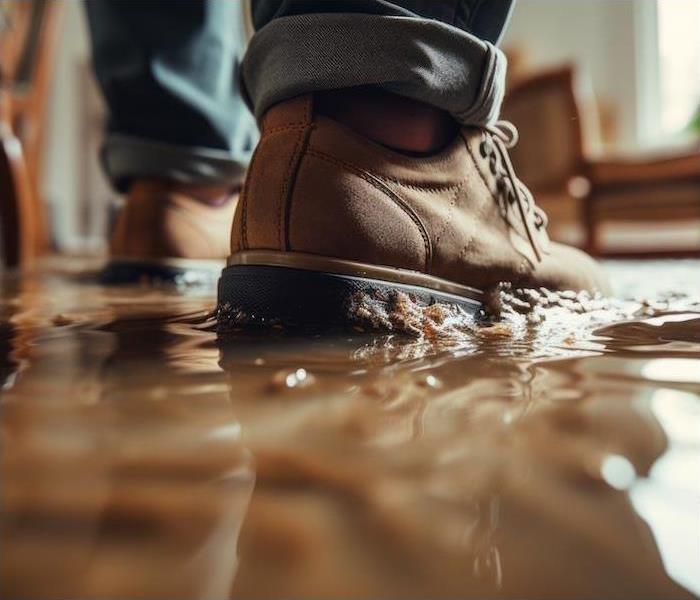Going Back to the Basics of Flood Damage | SERVPRO of East Lansing/Haslett
4/1/2024 (Permalink)
 SERVPRO of East Lansing/Haslett is ready to help in a moments notice after spring showers leak in to your home or business.
SERVPRO of East Lansing/Haslett is ready to help in a moments notice after spring showers leak in to your home or business.
If you have school-aged children who bring home math homework, you know how important understanding the basics can be. In order to get anything done well and without a potential meltdown, the basics are always the best place to start.
Understanding the basics of disaster preparations is also the best way to keep your home as safe as possible no matter what Mother Nature throws our way. While we won’t ever be able to control her altogether, the more prepared we are, the less damage she can do to our homes.
Flooding is one of the top natural disasters that leaves homes damaged every year around the nation—which means tackling the basics of flood safety is crucial for your home.
Water damage can originate from a lot of places, including those that have nothing to do with nature. Internal, manmade disasters, like a broken appliance, can certainly do a lot of damage, but they are often easier to control and recover from. With three rivers around our community, river flooding, flash flooding, and ponding from heavy rain are possible for all of us.
Getting to know where your home lies in a floodplain is a great first step in understanding your risks. This is especially crucial if you are near the Grand River, Red Cedar River or Sycamore Creek. Take a look at flood zones for your home and our community in order to know just how prepared you need to be.
Even if you are not near one of the rivers, heavy rains can still leave things pretty wet. Reynolds Drain and Mud Lake Drain often flood as well. If your home is in a lower lying area, consider adding additional drainage to your yard to avoid water seeping in.
If you have a lot of trees around your home, covering your gutters can be a great way to ensure rain flows quickly away from your home. Checking your roof regularly can also prevent potential blocks that could lead to a leak.
The more you can get to know the area around you, the better you can understand the risks you could potentially face. There are some other steps you can take to get your home prepared as well, though. Start with some regular yard maintenance in order to ensure water moves away from your house as quickly as it falls from the sky.
Make sure there is gentle sloping away from your home throughout your yard. If you have a spot that stays wet, consider adding some organic material or a garden that will pull water down into the soil. With so many water sources in our area, underground gutter downspouts are a great way to not only ensure heavy rains can’t leave puddles in your yard, but to also ensure your gutters aren’t damaged when a river flood does strike.
On the inside of your home, keeping an eye on your basement, windows and doors is a great way to keep things sealed and dry. Update caulking or weather stripping when it ages, and have your basement professionally sealed if you find visible cracks or gaps. A sump pump is another handy tool for keeping water out, and it can be particularly valuable during a river flood.
Don’t make protecting your home from flooding complicated. Keeping up with some basic home maintenance and being prepared for a natural disaster will be far easier than teaching your kiddos multiplication.
Do you have water damage in your home? Contact us at SERVPRO® for fast recovery.





 24/7 Emergency Service
24/7 Emergency Service